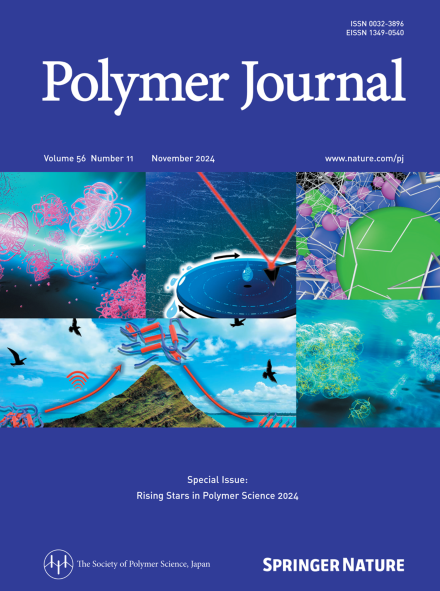用于增强癌症治疗的无载体纳米前药:刺激反应设计和应用
IF 2.7
4区 化学
Q3 POLYMER SCIENCE
引用次数: 0
摘要
本文综述了无载体纳米前药作为一种创新的癌症治疗方法的发展。我们讨论了纳米前药的设计策略、合成方法和对各种刺激反应的特性,包括酶、活性氧(ROS)和谷胱甘肽(GSH)。本文重点介绍了在不使用载体的新型刺激反应纳米前药的开发方面的最新进展,从而解决了传统的基于纳米载体的药物递送系统面临的挑战。主要内容包括:(1)基于抗癌剂SN-38的酯酶激活纳米前药的设计和合成,证明了取代基疏水性对控制水解抗性和药物释放特性的重要性;(2)利用喜树碱与三甲基锁基团结合,开发了ros活化的纳米前药,展示了一种新的叔醇类药物的分子设计原理;(3) SN-38的gsh应答二聚体前药通过二硫键连接,在体内显示出增强的抗肿瘤作用和减少的副作用。这些无载体的纳米前药具有高载药能力,优异的刺激反应性,改善的治疗效果和减少的副作用。最后,我们讨论了未来的研究方向,包括优化纳米前药设计以增强癌症治疗。无载体纳米前药(npd)通过刺激反应系统(酯酶、活性氧(ROS)和谷胱甘肽(GSH))在癌细胞中选择性释放药物。酯酶激活的npd通过SN-38修饰表现出疏水性依赖性的药物释放。具有三甲基锁基团的ros响应npd被细胞内H2O2选择性激活。gsh反应二聚体SN-38前药表现出增强的抗肿瘤作用和减少的副作用。这些npd在不使用载体的情况下获得了高药物载量和良好的刺激反应性,为更安全、更有效的癌症治疗提供了一个有希望的平台。本文章由计算机程序翻译,如有差异,请以英文原文为准。

Carrier-free nano-prodrugs for enhanced cancer therapy: stimuli-responsive design and applications
This review focuses on the development of carrier-free nano-prodrugs as an innovative approach to cancer therapy. We discuss the design strategies, synthesis methods, and characteristics of nano-prodrugs responsive to various stimuli, including enzymes, reactive oxygen species (ROS), and glutathione (GSH). This paper highlights recent advances in the development of a new class of stimulus-responsive nano-prodrugs without the use of carriers, thereby addressing the challenges faced by conventional nanocarrier-based drug delivery systems. The key aspects covered include (1) the design and synthesis of esterase-activated nano-prodrugs based on the anticancer agent SN-38, demonstrating the importance of substituent hydrophobicity for controlling hydrolysis resistance and drug release profiles; (2) the development of ROS-activated nano-prodrugs using camptothecin combined with trimethyl lock groups, demonstrating a novel molecular design principle for drugs with tertiary alcohol moieties; and (3) the GSH-responsive dimeric prodrugs of SN-38 linked by disulfide bonds, demonstrating enhanced antitumor effects and reduced side effects in vivo. These carrier-free nano-prodrugs exhibit high drug-loading capacity, excellent stimulus responsiveness, and improved therapeutic efficacy with reduced side effects. Finally, we discuss future research directions, including the optimization of nanoprodrug designs for enhanced cancer therapy. Carrier-free nano-prodrugs (NPDs) were developed for selective drug release in cancer cells using stimulus-responsive systems: esterases, reactive oxygen species (ROS), and glutathione (GSH). Esterase-activated NPDs showed hydrophobicity-dependent drug release through SN-38 modification. ROS-responsive NPDs with trimethyl lock groups demonstrated selective activation by intracellular H2O2. GSH-responsive dimeric SN-38 prodrugs exhibited enhanced antitumor effects with reduced side effects. These NPDs achieved high drug loading and excellent stimulus responsiveness without using carriers, providing a promising platform for safer and more effective cancer therapy.
求助全文
通过发布文献求助,成功后即可免费获取论文全文。
去求助
来源期刊

Polymer Journal
化学-高分子科学
CiteScore
5.60
自引率
7.10%
发文量
131
审稿时长
2.5 months
期刊介绍:
Polymer Journal promotes research from all aspects of polymer science from anywhere in the world and aims to provide an integrated platform for scientific communication that assists the advancement of polymer science and related fields. The journal publishes Original Articles, Notes, Short Communications and Reviews.
Subject areas and topics of particular interest within the journal''s scope include, but are not limited to, those listed below:
Polymer synthesis and reactions
Polymer structures
Physical properties of polymers
Polymer surface and interfaces
Functional polymers
Supramolecular polymers
Self-assembled materials
Biopolymers and bio-related polymer materials
Polymer engineering.
 求助内容:
求助内容: 应助结果提醒方式:
应助结果提醒方式:


